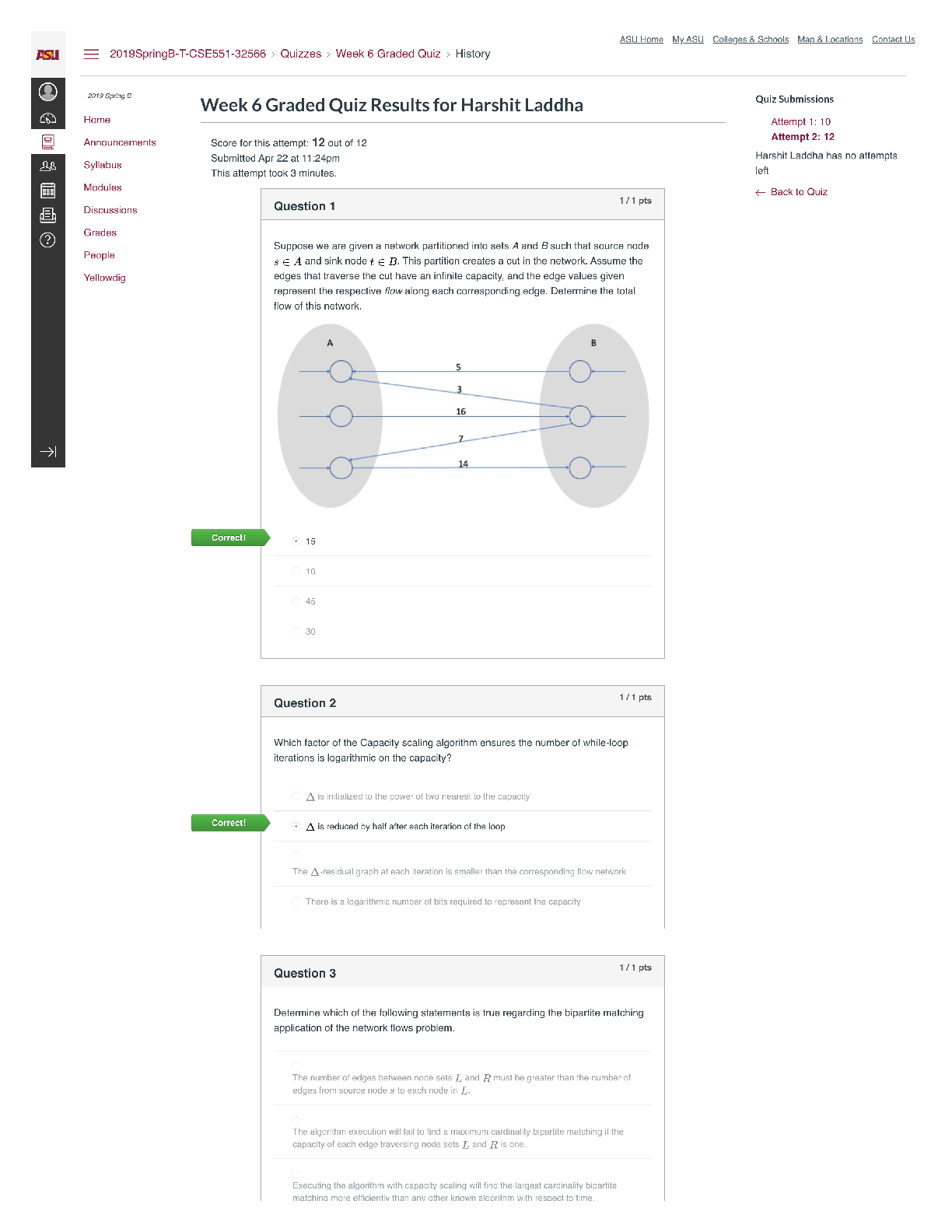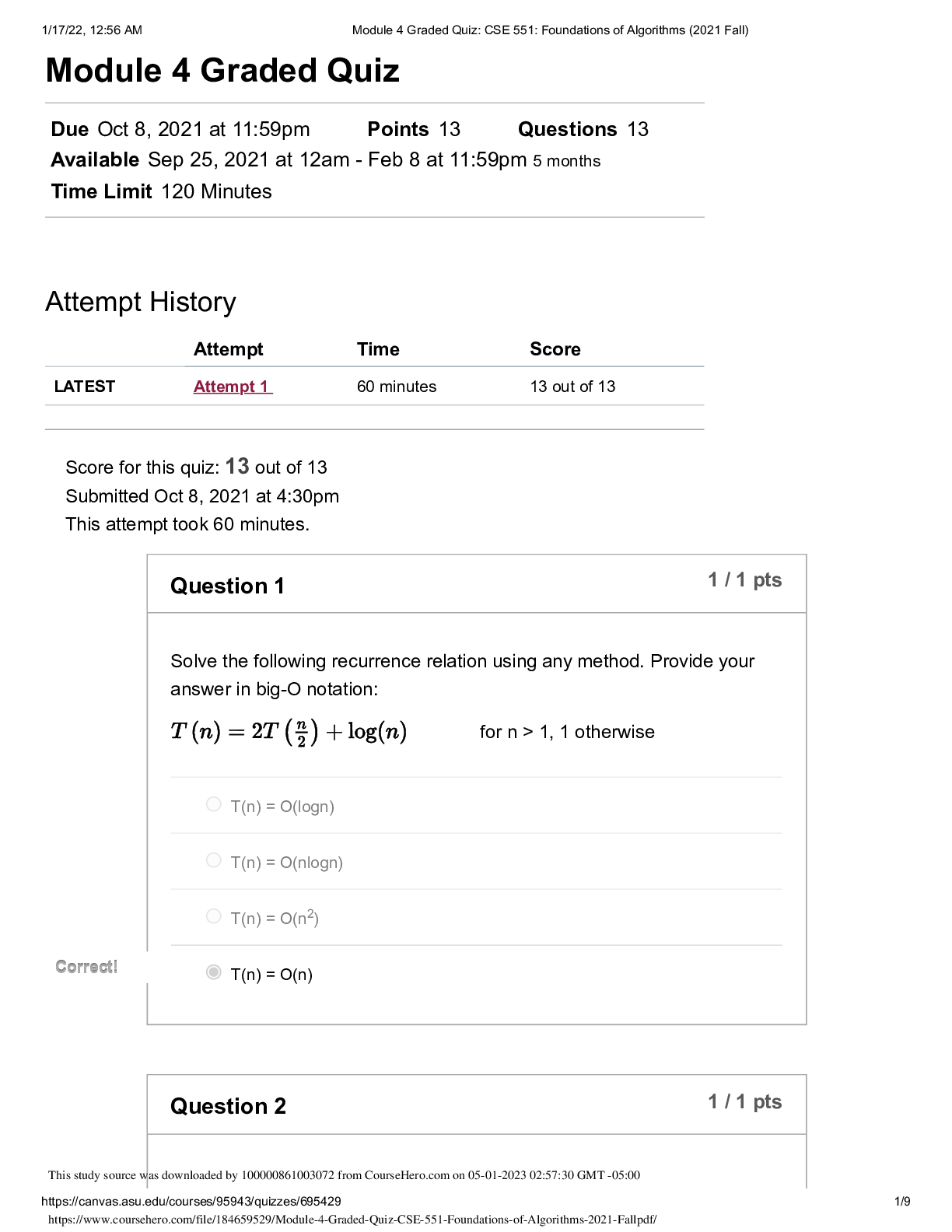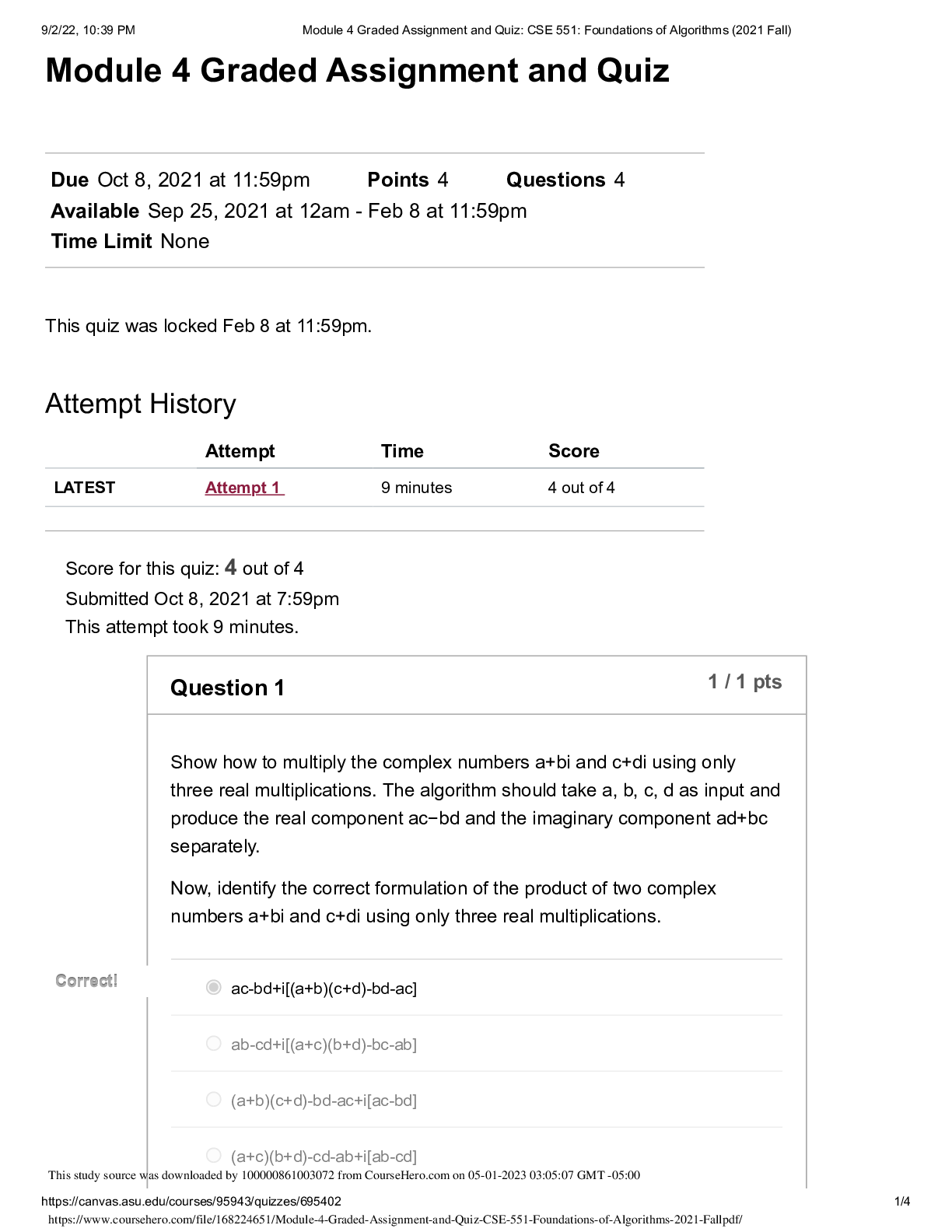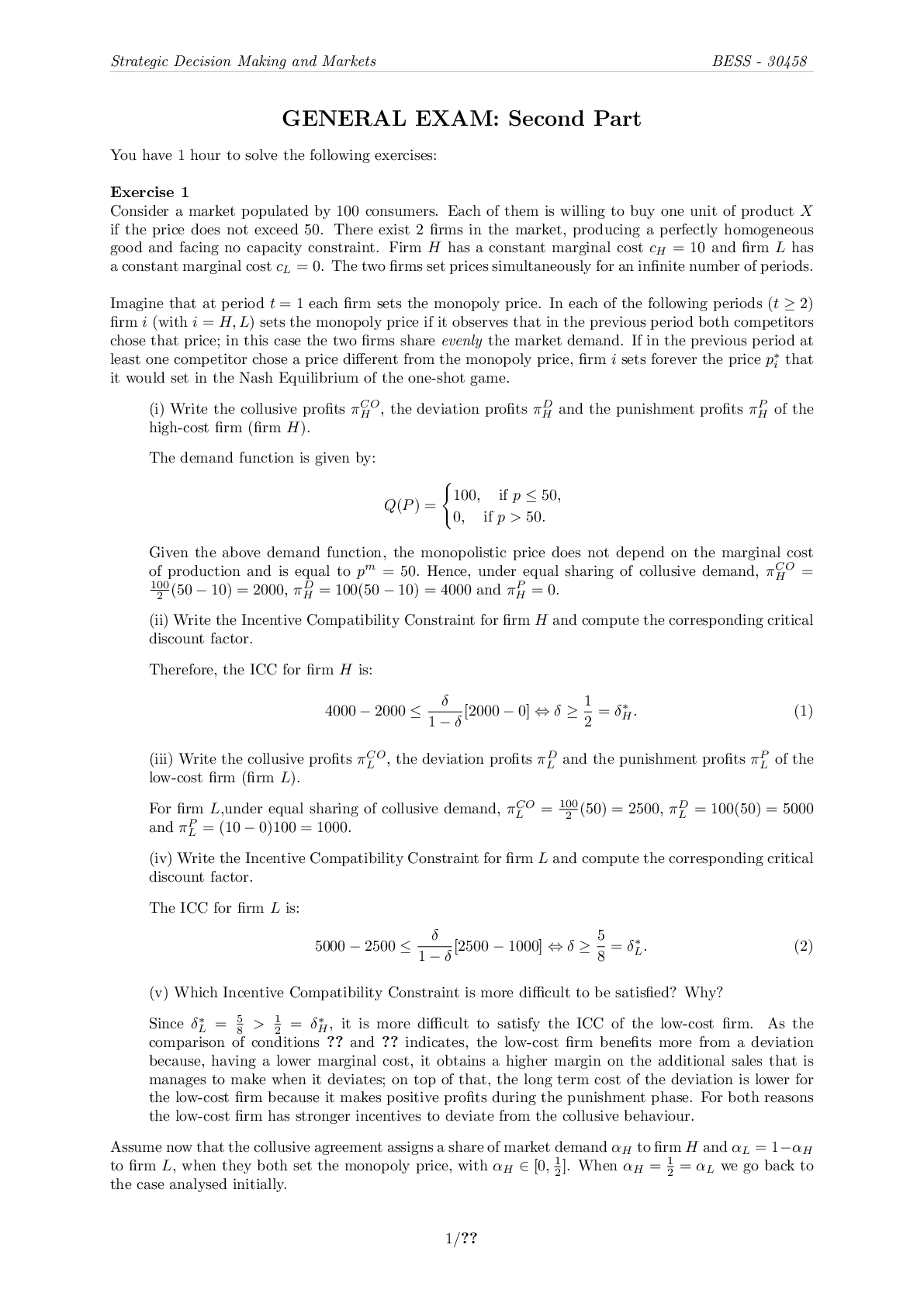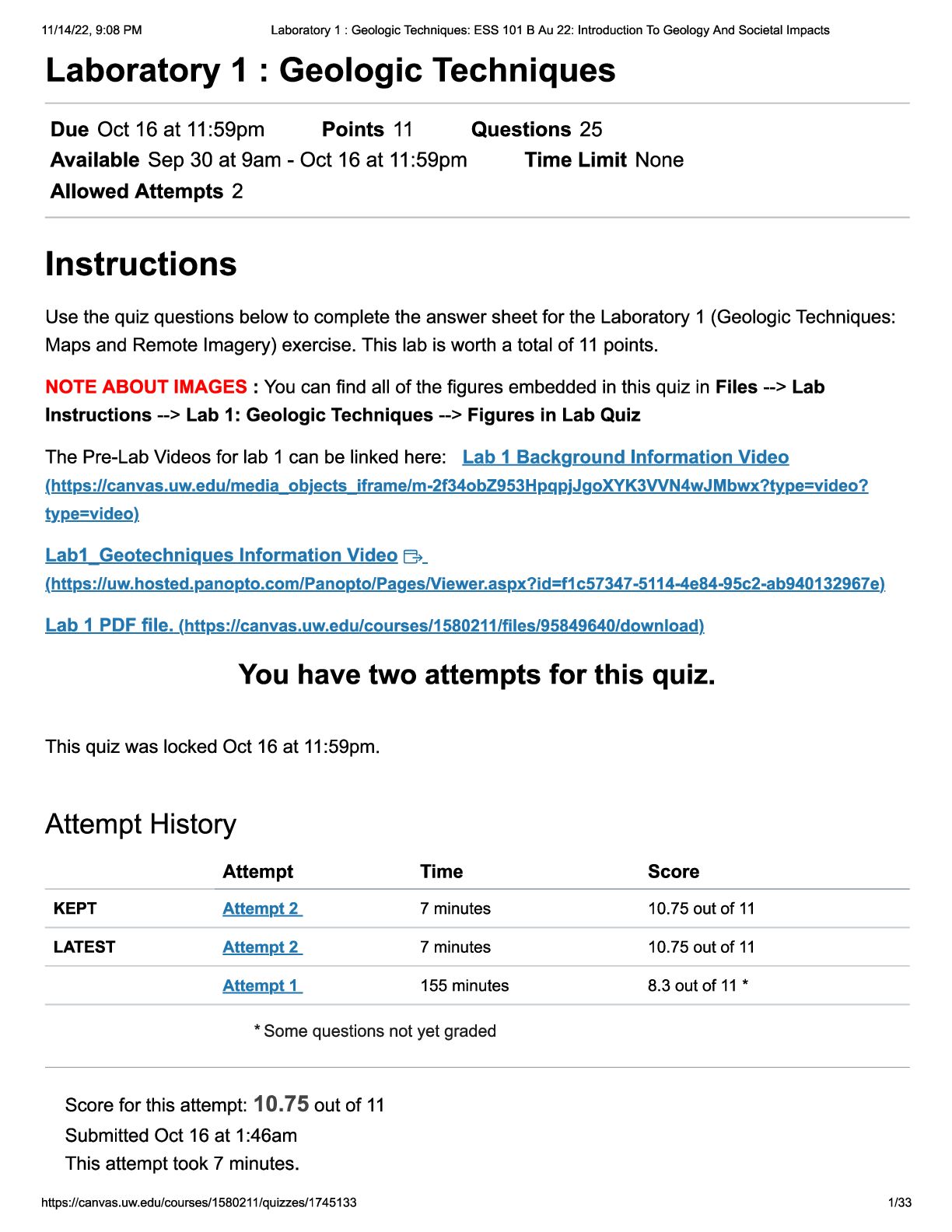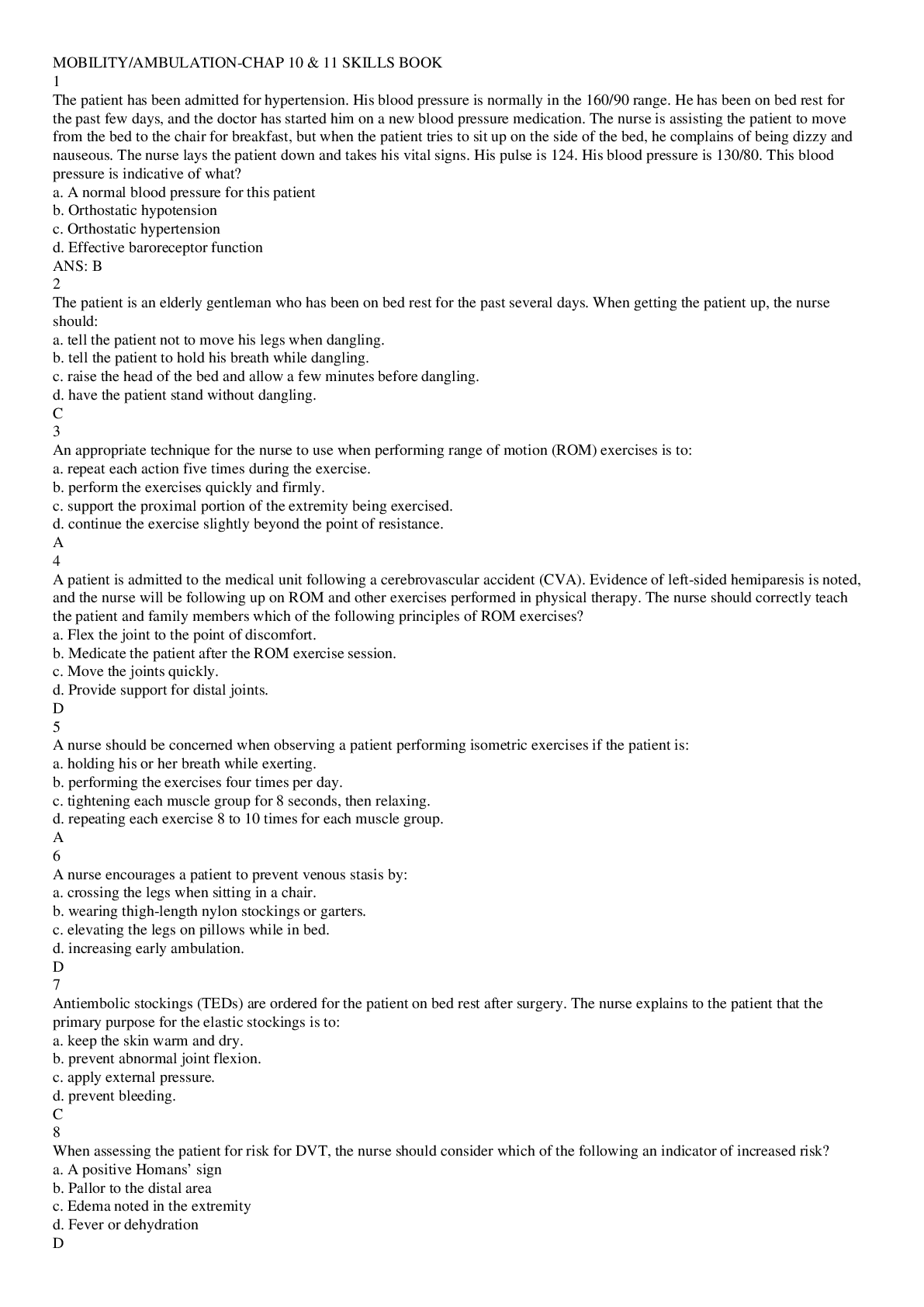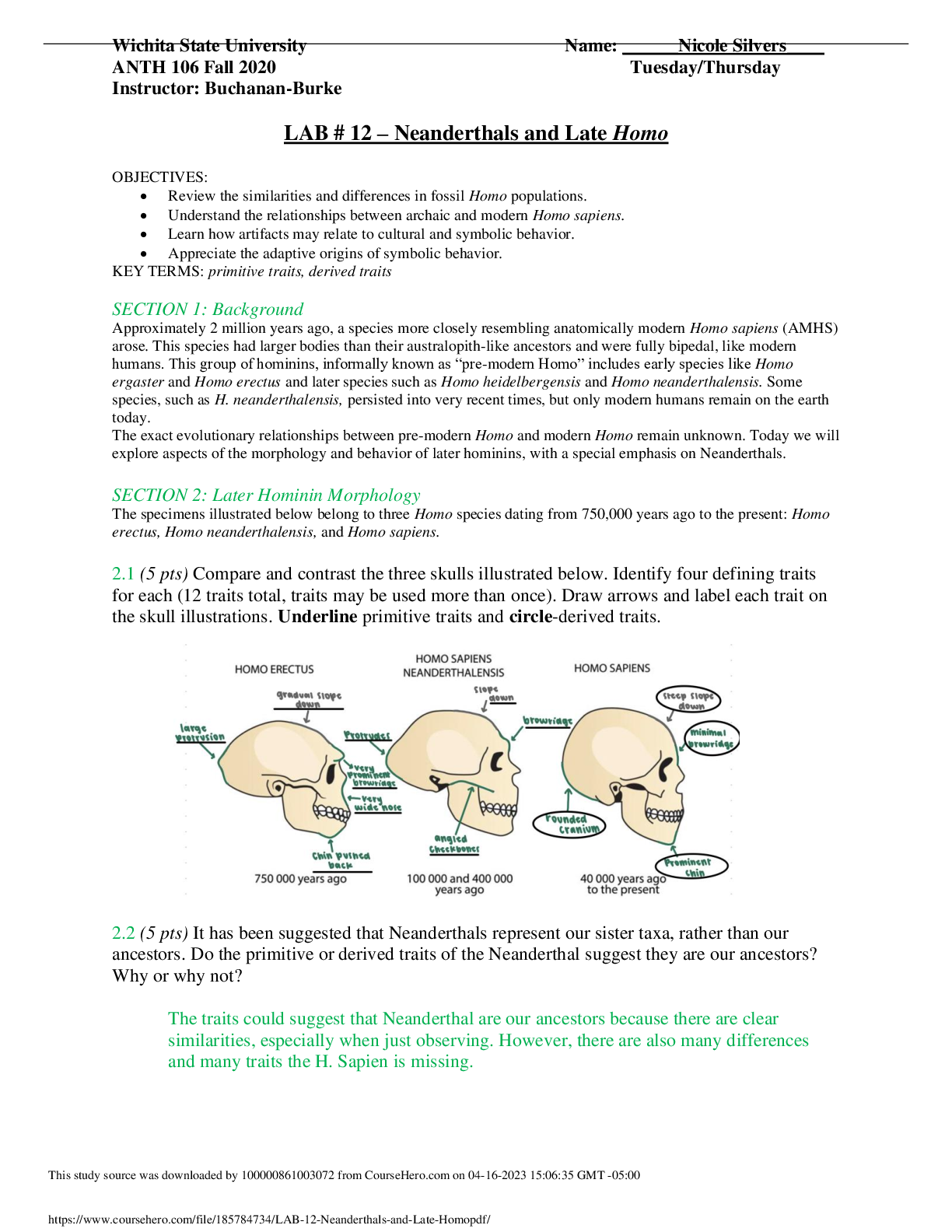Anthropology > QUESTIONS & ANSWERS > ANTH 106 Biological Anthropology Lab - LAB # 10 & 11 – Evolution of Human Locomotion and The Genus (All)
ANTH 106 Biological Anthropology Lab - LAB # 10 & 11 – Evolution of Human Locomotion and The Genus Homo - Wichita State University. Plus Q&A
Document Content and Description Below
LAB # 10 & 11 – Evolution of Human Locomotion and The Genus Homo Wichita State University ANTH 106 Fall 2020 SECTION 3: The genus Homo Each fossil of a hominin represents a unique individual... . Therefore, no two fossil hominins share identical morphologies. Morphological similarities can cluster fossils into the same species, but there is no rule regarding how similar fossils must be to each other to belong to the same species. Sometimes researchers disagree over whether a fossil represents a new species or belongs to a previously established species. This is especially difficult to determine because primates can have high degrees of sexual dimorphism. Males and females of the same species can look very different and establishing the sex of an individual from fossil remains can be very difficult. Therefore, a new fossil could represent the other sex of a species already established in the fossil record or a truly new species. Measures of variation (i.e., size and shape differences) can help determine whether a fossil’s morphology reasonably falls within the estimates of an existing species. In this lab, we will examine the morphological characteristics of each of the fossils and discuss the justifications for separating them into subsequent genera and species. Australopithecines Australopithecus afarensis – This is one of the oldest of the australopithecines. Australopithecus Afarensis lived between approximately 3.9 and 2.9 mya. Australopithecus exhibit post-orbital constriction that is greater than more recent hominins, but less than extant (still alive) hominoids. Australopithecus africanus – A. africanus was one of the first hominin ancestor fossils ever discovered, when in 1924 Raymond Dart excavated the Taung Child. A. africanus is remarkably similar to A. afarensis, yet we still prefer to keep them separate. Paranthropines Most of the Paranthropines were discovered in eastern Africa. The Paranthropines are known for their wide, ‘Dish-shaped’ face. This is a result of large temporal muscles (chewing muscles) that run underneath the zygomatic arches. The wide face shape combined with the robust, flat molars of the Paranthropines led to the hypothesis that Paranthropines ate mostly grasses and seeds. The sagittal crest is also a characteristic of the Paranthropines that is a result of the strong temporal muscles. Paranthropines have been classified into three species: P. aethiopicus (2.5 mya), P. robustus (1.8-1.2 mya), and P. boisei (2.3-1.2 mya). Early Homo H. habilis is currently the oldest species included in the genus Homo (the oldest known specimens have been dated to ~2.4 million years ago). However, this taxon is controversial, because the specimens included within it exhibit a high degree of variation. It is not known whether these specimens truly all belong to H. habilis or whether the sample includes representatives of multiple species. Also, although H. habilis shares certain morphology, especially its limb proportions, are more similar to the earlier australopiths. Some researchers have even proposed that Australopithecus habilis is a more appropriate species name. 3.1 (5 pts) Do the morphologies between the Australopithecines and Paranthropines differ drastically? Wichita State University Name: _____Nicole Silvers______ ANTH 106 Fall 2020 Tuesday/Thursday Instructor: Buchanan-Burke 3.4 (5 pts) Write a brief paragraph (6-8 sentences) describing how each of the separate species of hominin fossils may or may not be distinct and separate species. Use sexual dimorphism and punctuated equilibrium/gradualism to help your answer. In 1972 Eldredge and Gould took a look at the fossil record and noticed a trend. The trend was that there were major evolutionary changes that occurred in spurts in-between long spans of time. The theory was that evolutionary changes and development would occur rapidly and in spurts, and it was termed ‘Punctuated Equilibrium’. The other side of the argument is gradualism. Gradualism suggests that evolutionary changes occur gradually and slowly over long timespans. Microevolutionary changes occur at a very slow rate which slowly build up to a macroevolutionary change. 4.1 (5 pts) What are some of the problems regarding punctuated equilibrium when one looks at the fossil record? 4.2 (5 pts) Is gradualism a better or worse interpretation of the fossil record than punctuated equilibrium? Why? 4.3 (5 pts) Could punctuated equilibrium and gradualism be combined to form a new intermediate hypothesis? Explain why or why not. Visit https://humanorigins.si.edu/evidence/human-family-tree You will explore the different genera that have been discussed during this week's lab. • Australopithecines • Paranthropines • Early Homo Use the PowerPoint titled Take Home to complete the following steps. (4 points each) Use the crania provided on each slide to help identify the Genus and Species you have been presented. • Ex. Homo sapiens Then write one interesting fact that you learned about that species. [Show More]
Last updated: 1 year ago
Preview 1 out of 5 pages

Buy this document to get the full access instantly
Instant Download Access after purchase
Add to cartInstant download
We Accept:

Reviews( 0 )
$9.50
Document information
Connected school, study & course
About the document
Uploaded On
Apr 20, 2023
Number of pages
5
Written in
Additional information
This document has been written for:
Uploaded
Apr 20, 2023
Downloads
0
Views
38




